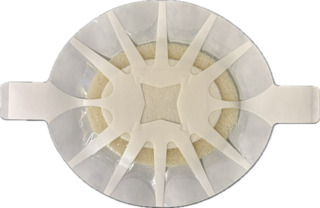This article is incomplete.
¶ Introduction
ALS affects sleep in a number of ways. Fasciculations and spasticity symptoms can make falling asleep difficult. Rolling and repositioning requires sufficient strength in a broad number of muscles throughout the body. The horizontal position increases the workload of the diaphragm muscle used for breathing.
¶ Sleep Quality
¶ Fasciculations and spasticity
Fasciculations are annoying and can be difficult to ignore when falling asleep. Many individuals with ALS learn to ignore them over the course of time. Muscle atrophy gradually reduces the magnitude of fasciculations, which makes them easier to ignore.
Spasticity can be painful in some situations and may set in overnight. Some individuals with ALS will observe muscle cramping when they wake up the following morning.
¶ Pain
Pain while sleeping for an individual with ALS is caused by excessive pressure on specific points of the body, such as the shoulders, buttocks or sides of the knees. Special adhesive pads known as foam dressings may be placed in certain areas to reduce the amount of pressure being applied to a specific part of the body. Otherwise, it is important to use a mattress with an appropriate level of firmness, and to reposition periodically through the night.

Foam dressing still in wrapper
¶ Respiratory difficulties
Breathing is most difficult when lying down for most people. A weak diaphragm muscle will have the greatest difficulty performing its duties overnight, as it is the longest period of time when the individual will be in a horizontal position.
Early breathing difficulties may not be directly noticeable at first; instead, deep levels of sleep may gradually become unachievable, but may otherwise have no clear presentation. The individual may find that they need to wake up in the night to urinate more often than they did in the past. This would suggest shallower levels of sleep.
An individual with ALS that has observed a decrease in sleep quality that is not related to pain nor environment, such as light or noise, should consult with a physician.
¶ Lack of exercise
Individuals with ALS tend to be quite sedentary; getting to sleep may be difficult if they have a great deal of unused energy by the end of the day. Little can be done about this besides avoiding naps or staying up later.
¶ Repositioning
Repositioning in bed involves the recruitment of a large number of muscles. The hip flexors, located at the top of the front of the thighs, are responsible for elevating the knees, while the hip extensors are responsible for elevating the buttocks and lower back off of the surface of the bed so that a roll can be initiated. At the same time, many muscles of the arms and shoulders are recruited in a similar manner to help the upper body perform the movement.
An individual with ALS will naturally adapt their repositioning technique as various muscles in the body experience atrophy. The use of momentum or weight shifting techniques are common. The level of atrophy and weakness eventually reaches a point where no adaptation is sufficient.
Assisted repositioning typically involves the use of an assistant, often with adaptive equipment to prevent the assistant from having to lift the patient using their own strength. High-tech mattresses which have repositioning functionality built into them are available. Such mattresses are costly and are not typically covered by standard insurance policies.
¶ Coverings
An individual with ALS is sensitive to the weight and friction of the material used in coverings such as blankets and sheets. The individual can become trapped in the coverings when rolling in the night.
Determining what coverings our ideal is difficult; often, a great deal of experimentation is required. The covering over the mattress should not be too slippery as it may cause the individual to slide off the edge of the bed when repositioning.
Dependence on coverings for warmth can be reduced by raising the temperature of the room itself.
¶ Further Considerations
An individual with ALS must be able to communicate their needs at night. The use of a call bell can be used to alert other people in the home.